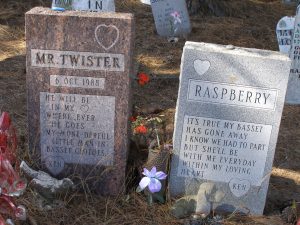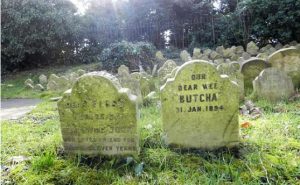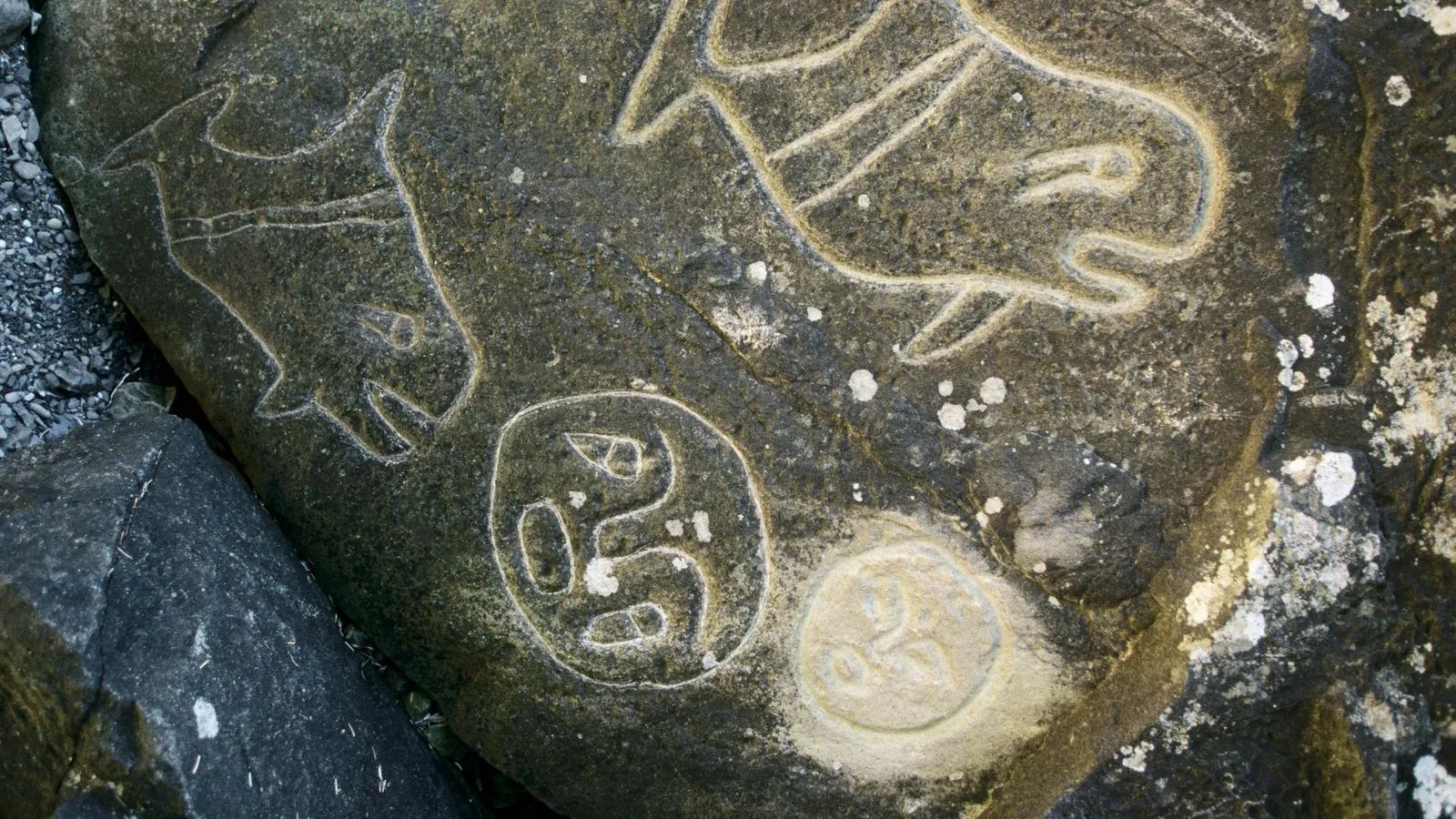By: Aidan Wisherd
At first glance, a pet cemetery may be seen as a place that solely remembers an animal and its relation to a human. A refined archaeological approach develops understanding that a pet cemetery says as much about humans as it does pets. Hyde Park in the United Kingdom is the oldest pet cemetery in the nation and has over 1,000 pet remains (Aridi 2020). Burials display a shifting relationship between humans and their companions, with funerary practice changing from remain disposal to a sustained grieving period in the UK after World War II (Aridi 2020). The relationship between humans and animals, in the form of pets, can be seen in the archaeologically observed monuments and remains.
The UK saw a shift to pet-keeping in the late 18th and early 19th century that gave way for a relationship that included emotional attachment, illustrated through the burial of Cherry the dog. Before 1881, elites would hold funerals or formal burial for pets, but Cherry’s owner asked for the dog to be buried in Hyde Park (Tourigny 2020). Careful observation of the cemetery that has since expanded vastly allows for archaeologists to examine even the shifts in the gravestones themselves since inception. Comparable to human burial ground examinations in many cases, monuments and stones have been moved in the pet cemetery, but much is still able to be revealed.
The early 20th century assessment of Hyde Park illustrates a shift in familial attachment to pets. After World War II, use of family names in addition to the pet’s name on a monument, as well as references to father and mother, became evermore apparent (Aridi 2020). This marks a greater public display of pets as family members. A similar change in the cemetery’s narratives was the incorporation of religion on tombstone’s, alluding to a deeper level of companionship following the Second World War (Aridi 2020). The cemeteries, therefore, become indicative not solely of how a pet behaved but rather how the pet shifted the behavior of its human owners.

Figure 2. Mr. Twister and Raspberry are buried in the Presidio Pet Cemetery in San Francisco, California with a note from their “father” Ken. (California Pet Cemeteries)
Examining early pet cemeteries for shifts in human actions is incredibly useful for the determination of shifts in human behavior. Archaeological examination allows for an understanding of behavior rather than broad generalities on a pet’s honorary epigraph. Through surveying and excavation of sites, visible shifts in specific cultural approaches to funerary practices for animals can be observed through monuments and grave sites. The assessment must be done that not only does human interaction affect animals that have been domesticated, but that the animals also play a key role in a shift in human behavior.
Helpful Links:
Smithsonian Piece on Hyde Park
Cambridge Article on UK Pet Cemeteries
Works Cited
Aridi, Rasha. “Pet Cemeteries Reveal Evolution of Humans’ Relationships with Furry Friends.” Smithsonian.com, Smithsonian Institution, 28 Oct. 2020, https://www.smithsonianmag.com/smart-news/pet-cemeteries-reveal-just-how-much-our-relationships-pets-have-evolved-180976153/.
“California Pet Cemeteries.” RoadsideArchitecture.com, https://www.roadarch.com/petcem/ca5.html.
Rowan, Lily. “The Secret Pet Cemetery of Hyde Park.” History Daily, 7 Dec. 2017, https://historydaily.org/hyde-park-cemetery.
Tourigny, Eric. “Do All Dogs Go to Heaven? Tracking Human-Animal Relationships through the Archaeological Survey of Pet Cemeteries.” Cambridge Core, Cambridge University Press, 27 Oct. 2020, https://www.cambridge.org/core/journals/antiquity/article/do-all-dogs-go-to-heaven-tracking-humananimal-relationships-through-the-archaeological-survey-of-pet-cemeteries/F44BE9BC2990709675C9A15D340D7F5F.



